
Overview
We first took a look at Indahash back in 2017, at a time when every influencer platform with a decent Discovery tool was billing itself as “The Google of Influencer Marketing.” Indahash, on the other hand, was doing things much differently. Rather than rely on keyword searches, influencer and audience demographics, and all kinds of metrics and attributes to filter by, Indahash went in the opposite direction, leaving it to an algorithm to play matchmaker between brands and creators—aka “The Tinder of Influencer Marketing.” The entire process of finding an influencer and negotiating the terms of the deal was boiled down to a brand questionnaire and a few clicks, and the results spoke for themselves.
On the strength of their innovative tech, and an aggressive push to recruit influencers onto the platform, Indahash acquired plenty of recognition and—more importantly—customers. But a funny thing happened as they brought on more and more big names: the very new practice of influencer marketing began to evolve and take shape. As the industry matured, so did Indahash. Today, the platform is still very much a product of its time, which is to say that it’s completely different than it was 6 years ago. And this is all a good thing.
Indahash’s evolution was very much just that: an evolution. The changes they’ve implemented didn’t come about as some kind of overnight rebrand. Rather, they came at the request of Indahash’s customers—brands and agencies that were very happy with the platform and just wanted it to do a little more. And so, over the years, Indahash has attracted a lot of big name brands like Amazon, Coca-Cola, and Google. All told there are more than 600 brands and agencies in over 100 countries who’ve used Indahash to run a combined 19k+ campaigns. The only thing better than a breakout debut is slow and steady growth. Over the last six years, Indahash has experienced both.
Summary: Quick Jump Menu
Pricing
Another evolution for Indahash is its pricing model. In its early days, it was purpose-built for quick turnaround on campaigns. Now, though, the platform is all grown up, offering tons of features that can be sliced and diced into different subscription tiers. They don’t publish their pricing, but do detail what levels of service they offer:
- Creator Discovery — Up to 5 users can use Indahash’s Discovery tool without restriction. Includes recommended brand-safe creators, creator search with over 20 filters, in-depth audience analysis, including Credibility Check, Audience Overlap, Crisis Detection, Competitor Check (more on these in The Details)
- Creator Discovery & Campaign Management Tools — Includes everything as above for up to 10 users, plus campaign/project/team/task management, automated campaign reporting for unlimited social media platforms, custom creator onboarding forms
- Agency Pack — Everything as above for up to 50 users.
- Whitelabel / Enterprise License — For the largest of Indahash’s customers, this license offers a completely branded and customized instance of the platform for any number of users
Managed Service — For brands that want to rely on someone else’s creative expertise, all the discovery and campaign management is handled by Indahash’s in-house team. Access to the platform is offered for observational and collaborative purposes (giving input on influencer selections and campaigns, as well as being able to monitor results and reports).
The Details
The notion of Indahash being “all grown up” is apparent from the get-go. Log into the platform and you’re presented with a well-executed minimalism: the clean design makes getting settled into the environment a fairly intuitive process. Down the left side of the screen is a column of icons; hover your mouse over any one of them and the full navigation menu presents itself. To really drive home the point of its team/collaboration capabilities, the very first menu item takes you to an activity log. Here, you can see what everyone on the platform has been up to, get a sense of progress for any active campaigns or creator searches, and just generally orient yourself to your marketing day before diving deeper into the platform.
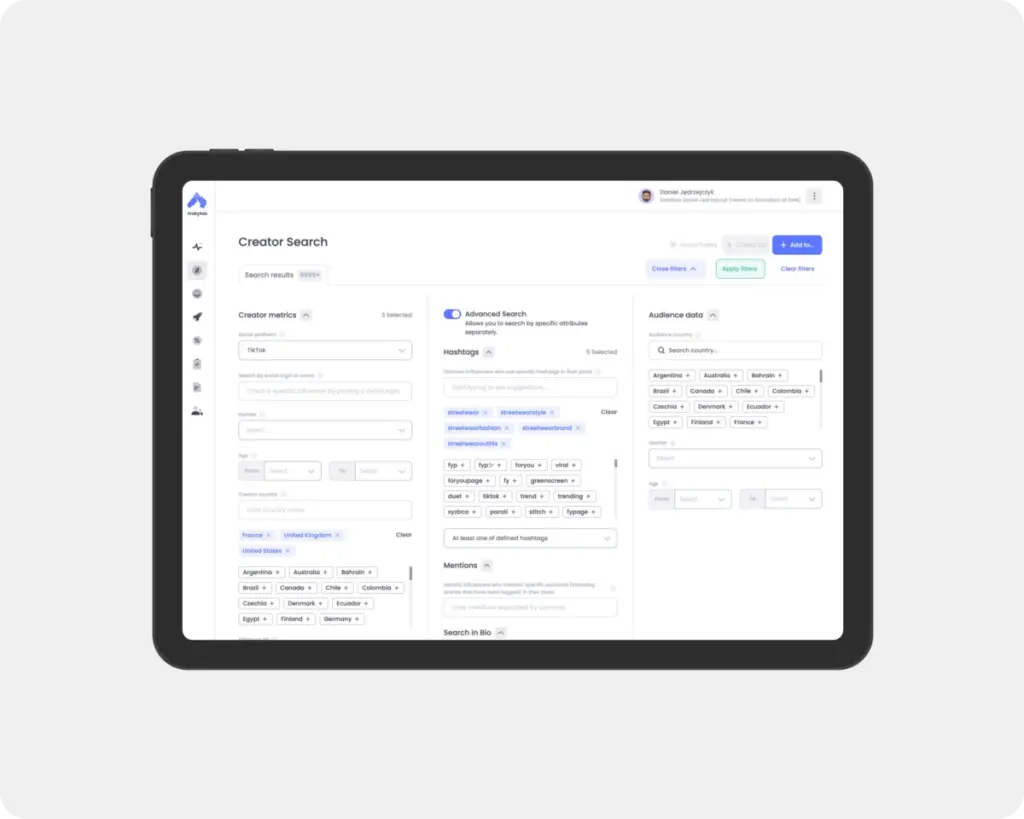
On to Discovery, where the minimal interface starts to look a little more maximal with all the options for filters and search terms across influencers, their audiences, and content (including images). The functions of the search features are as you’d expect them—that is, you have a good amount of specificity within your search to find exactly what you want—but the real surprises are in the time saving ways Indahash deploys its analytics. One example of this is the ability to search by paid post performance: many platforms will tell you how a creator’s paid posts perform compared with their organic ones, but that’s something you find out after you’ve already searched and started looking at each profile. Here, you can straight up set a minimum performance threshold in your searches, telling the platform to not even bother showing you results where their paid posts get, say, 80% or less the engagement of their organic ones.
Some of Indahash’s analytical highlights end up in the results themselves: looking at an influencer’s profile offers both metrics and plain-language explanations. It’s good to know someone’s reach, but it’s more useful to know much of their audience has a decent audience size, too. Indahash shows you the percentage of an audience that it considers “notable” (i.e. having >1k followers). The platform also gives you an audience credibility score while explaining what the criteria to determine credibility.
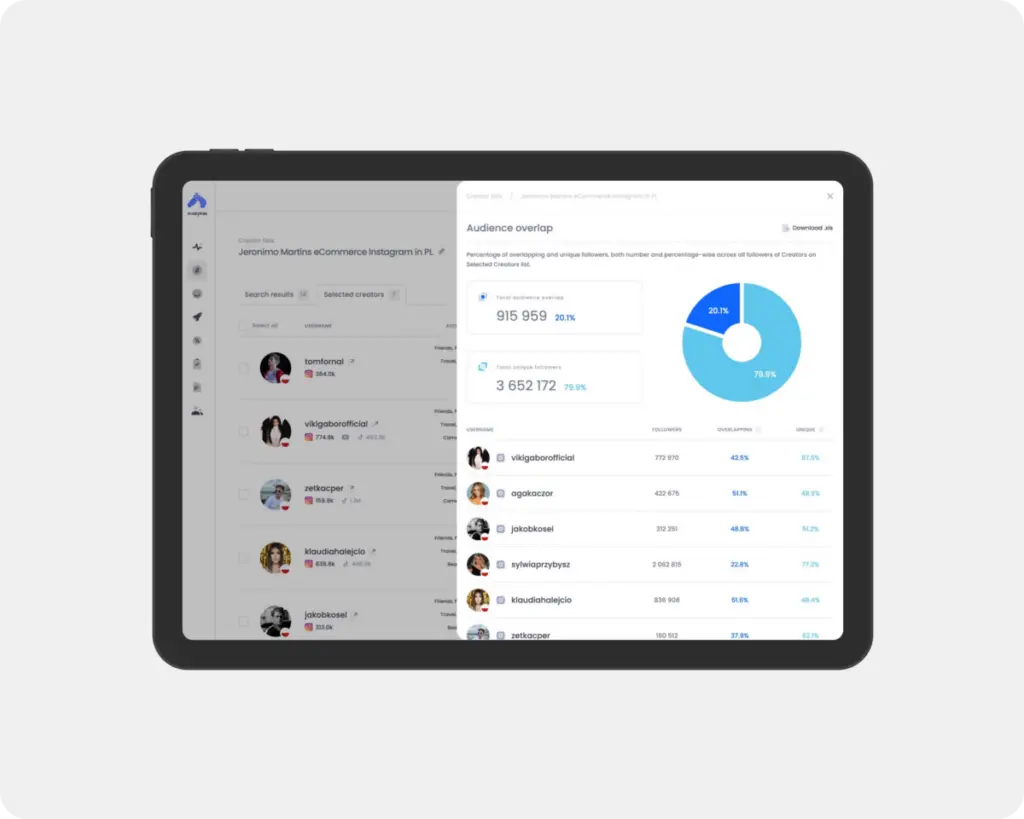
And some of them turn common efficiency tools into something a little more. Indahash isn’t the first to include an Audience Overlap tool to uncover the true size of an influencer group’s unique reach. But they’re the first we’ve seen to get specific and show the individual overlap rates—some creators might have such a small percentage of unique followers within a group that it doesn’t make sense to hire them. It wouldn’t be possible to uncover this by looking at the stats in aggregate.
On top of all this is Indahash’s aggressive Brand Security protocols—before a creator is accepted onto the platform (either by applying through the creator-facing mobile app or landing page) their profile goes through a six-level “safety” check of their content to ensure there’s nothing inappropriate or offensive. Think: nudity, drug/alcohol use, excessive swearing, violence, and—we hope—pineapples on pizza. If any of these checks fail, they won’t be accepted (though, it should be noted, customers of Indahash can add whoever they want to their lists and campaigns if there’s someone they really want to work with. Of course, safety in the past doesn’t mean safety in the present, and the platform’s Crisis Detection Scanner ensures that people who are already in the system don’t run afoul of the safety rules.
The Crisis Detection Scanner is made possible by Indahash’s real-time ingestion of data. While other platforms might update daily or weekly, this platform serves data that’s as fresh as it gets. For creators at a certain level of popularity, the data is synchronized in real time, made possible by API connections to Instagram, TikTok, YouTube, and Snapchat. Less popular ones are left alone to save processing cycles, but a user that clicks on a profile which hasn’t been updated recently will experience a delay of just a few seconds while the system pulls the data in.
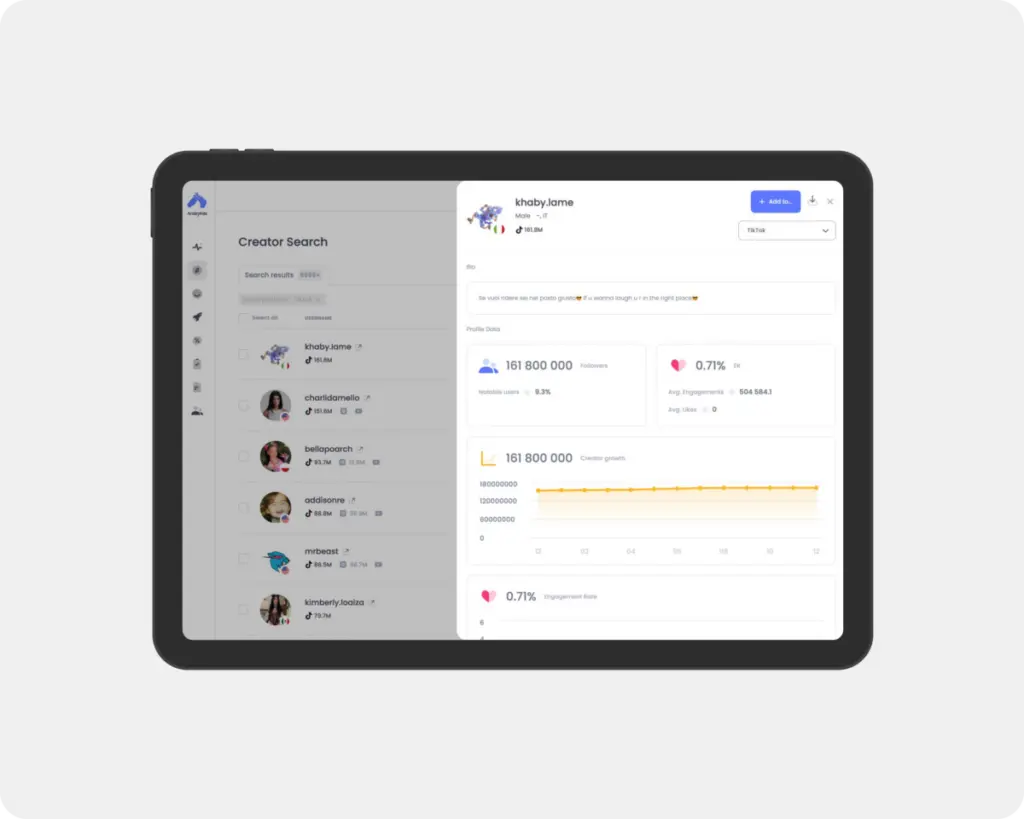
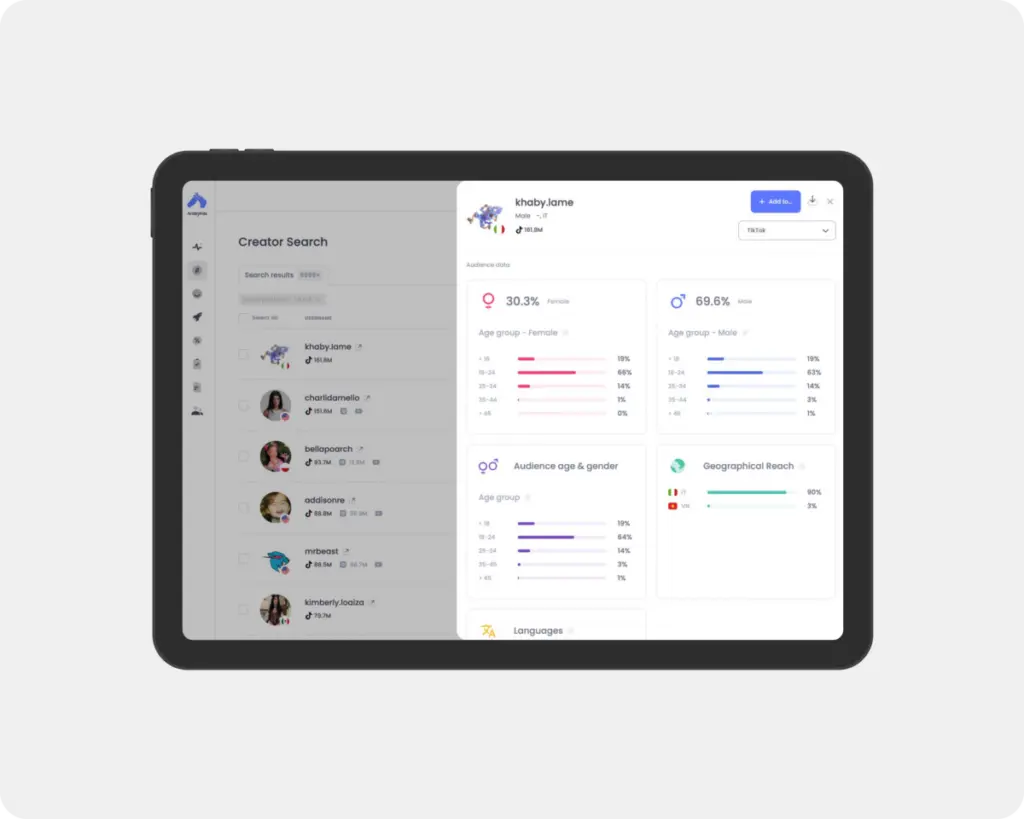
On the campaign side of things, Indahash is no less impressive. Campaign creation allows you to define goals that are much more concrete than ephemeral notions of “building brand awareness” or “nurturing loyalty.” One of the biggest indicators the platform has evolved with influencer marketing over the years is the presence of e-commerce integrations with Shopify and WooCommerce (along with custom integrations at the Enterprise level). By arming your creators with coupon codes, Indahash’s reporting engine can track all sales generated in your campaign. The reporting features go deep here, showing you all your performance and sales metrics in the aggregate before listing the same for each individual influencer. You’re able to see your per-influencer ROI, all of which is calculated against their fees and/or commissions.
In fact, the reporting is some of the most customizable we’ve seen—you can go further than simply picking and choosing which columns you want to see and actually create your own new ones with a custom formula—much like a spreadsheet. For example, if you’re paying your creators on a commission basis, you can choose where in the grid you want the “Total Sales” and “Commission Rate” to appear. To show how much you owe them, you create another column with a formula to do the math on those two values. This sounds basic—and for a spreadsheet it is—but for a webapp where you’re managing possibly hundreds of payments at a time, this is a real time saver. For example, if there were some creators who wanted a flat rate, some who wanted a commission, and some who wanted both, you only need to create one column to handle all three of those options: Base Fee + (Total Sales x Commission Rate). Keep on adding more influencers to the campaign and set their rates however you want—you’ll have full flexibility to negotiate the right terms for everyone.
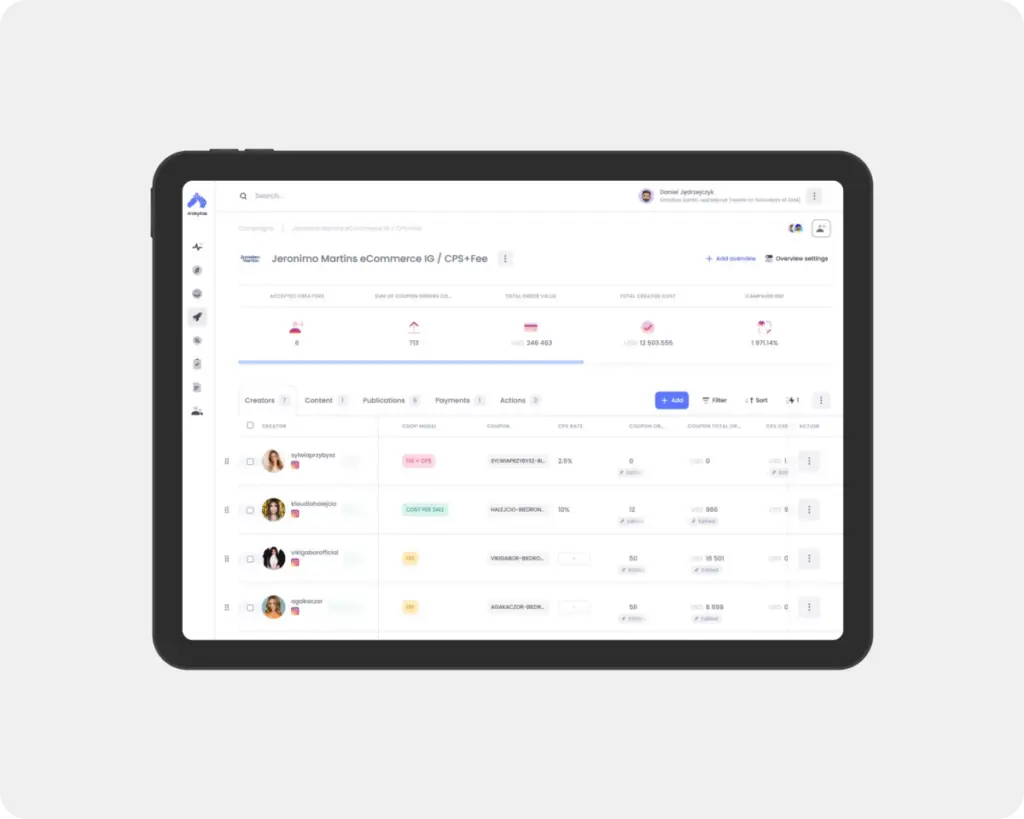
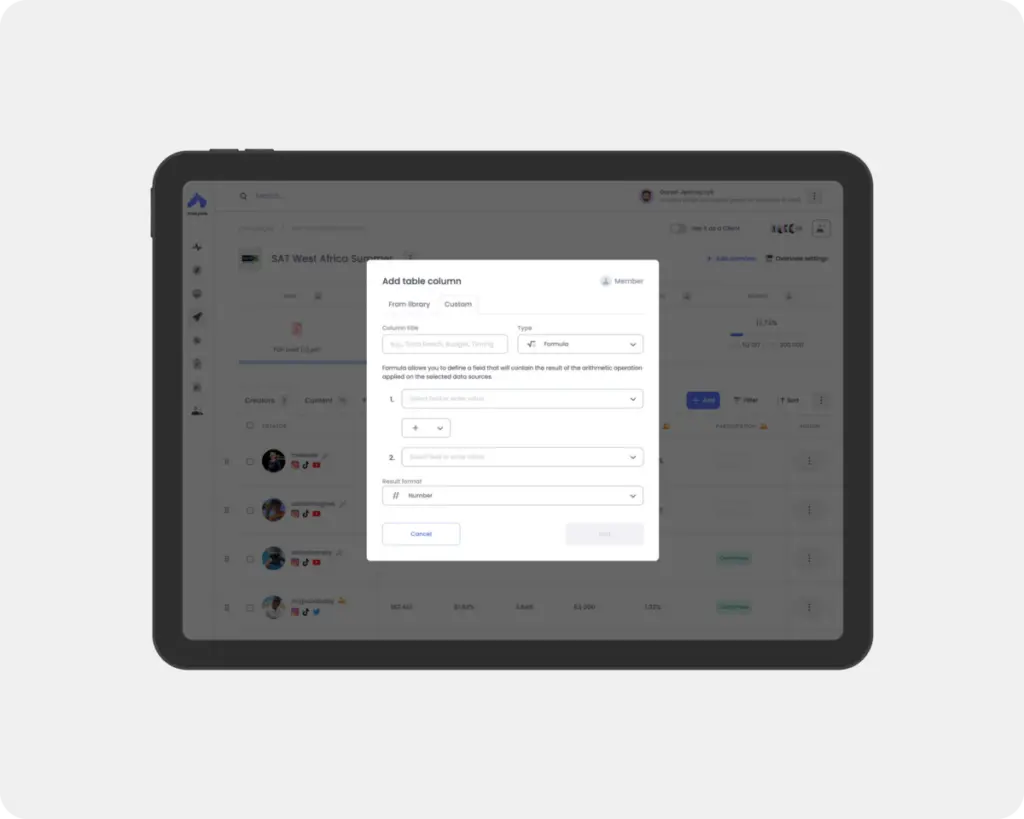
That flexibility is all over the platform. Getting the social data about creators requires an API integration, so Indahash shows everything it can get from Instagram, TikTok, YouTube, and Snapchat. But campaigns can be run anywhere, on any social channel—the flexibility of the way reporting works means you can at least get the public facing metrics, while the ecommerce integrations supplement that info with sales data. Campaign templates can speed up campaign creation, but custom is always an option (and you can save your own as new templates). The detailed task management tools allow for precise tracking of progress and statuses, while features like the Creator Showcases show how easy it is for teams to share resources and collaborate. Or even, in the case of reporting, if you’re an agency wanting to share information with a client, you can do this selectively by column in any report. The interface makes it easy to know what you’re sharing with them and you aren’t. These kinds of small details and tweaks are a big part of what makes Indahash so impressive.
Conclusion
What a difference (nearly) seven years makes. When we first checked out Indahash in early 2017, it branded itself with youthful flourishes: an 80’s neon/punk aesthetic for the website, app, and YouTube channel acted as a balance for the ultramodern algorithmic automation that powered the software under the hood. What Indahash lacked in configurability it made up for in innovation, but it was the company’s apparent willingness to embrace change that’s kept it going this long. Now, in December of 2023, the only thing that hasn’t changed is the name.
And this has been all for the best. Change is inevitable, especially in an industry that’s as relatively new as influencer marketing. The best tools for the job are going to change with the job and if they don’t? It’s time to get a new tool. Indahash has kept and grown its user base because it added new tools as needed. Due to the limits of space and attention span, this review couldn’t possibly list them all. But the more things change the more they stay the same. Weirdly, what seemed fresh and new seven years ago has done a complete 180 degree turn in the opposite direction—and it still seems fresh and new.
indaHash
-
Features
-
Ease of Use
-
Reporting


